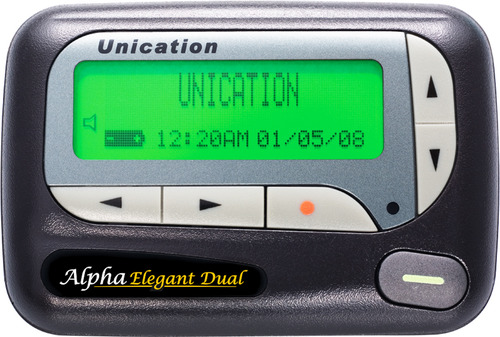Sometimes referred to as a beeper, a pager is a personal communication device that is used to receive short messages. These messages are usually a phone number to call back or a numerical code that means something to the receiver. The devices are generally small rectangular boxes that can be attached to a belt or left in a purse.
Birth Of Pagers
The first paging system was used in 1921. The Detroit Police Department used the system for communication between officers. The first telephone pager was invented by Al Gross in 1949 and was used in Jewish Hospital in New York City for doctors to communicate when they needed each other. The FCC approved pagers for use by the public in 1958, but it was awhile before they caught on with the masses.
In 1959, Motorola released their first pagers to the mass market. The pager worked by sending a radio message to a small receiver that the owner carried around with them. However, it was not very successful. A successful consumer pager was not released until 1974 when Motorola released the Pageboy. The Pageboy did not have a display and could not store messages, but was portable and allowed receivers to know when a message had actually been sent.
Development of Pagers
By 1980, 3.2 million people used pagers. At the time, pagers had a very limited range and were generally only used in hospitals or other situations where two people were on the same site and might need to page each other if they weren’t nearby. By 1990, there were 22 million pagers among the public population. They worked in a wider range and were suddenly becoming very popular. In 1994, more than 61 million people worldwide used a pager. Everyone from business professionals to middle school students were using pagers until cell phones became the norm.
Today, very few companies still manufacture pagers. Their use has come full circle, mainly used now in hospitals or in other locations where cell phone service is either unavailable or prohibited. Pagers are also popular in restaurants where hosts and hostesses give them to patrons to alert them when their table or food is ready, allowing them to wander around instead of being tethered to the restaurant while they wait. Even so, it is not secret that pagers are a declining market. The market only made 2.1 billion in 2008, a loss of 4.1 billion over the course of five years. However it’s still worth noting there reliability during network demanding times, for instance the games this summer where network coverage suffered in high volume areas. Having a paging network in place has small running costs and can be invaluable for business continuity plans.
Bill Weston reports on business continuity and incident management packages, specialising in simple paging and sms services, for more information please visit http://www.pageone.co.uk/.

